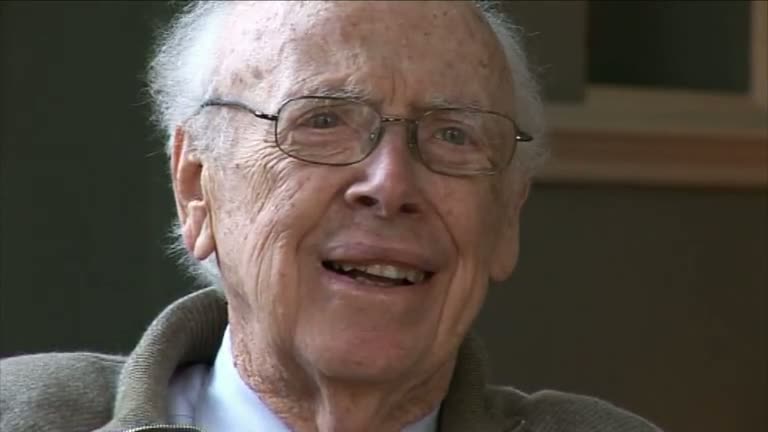NEXT STORY

Winning the Nobel Prize
RELATED STORIES

NEXT STORY

Winning the Nobel Prize
RELATED STORIES


|
Views | Duration | |
|---|---|---|---|
| 41. Running a lab at Harvard | 175 | 01:40 | |
| 42. Working with Wally Gilbert | 153 | 01:54 | |
| 43. Building the molecular biology department at Harvard | 140 | 02:53 | |
| 44. The importance of space in universities | 129 | 00:56 | |
| 45. Writing The Molecular Biology of the Gene | 124 | 04:24 | |
| 46. Aiming for a bestseller | 78 | 02:57 | |
| 47. Winning the Nobel Prize | 145 | 04:44 | |
| 48. Becoming a White House advisor (Fall 1961) | 75 | 04:18 | |
| 49. Biological weapons and special projects | 850 | 05:34 | |
| 50. Pesticides and Rachel Carson | 183 | 01:39 |


I think I set out to write a textbook which could be read for a long... you know, that wouldn't go out of date in three years, to try and put it in a broader reference frame. But, you know, everything was dominated John Kennedy in those, you know, several years. There's features, the glamour of his wife, the and suddenly style was back, and I think I wanted to be part of that era and, you know. I wanted to be, you know, a writer like Galbraith or someone, who was trying to do slightly more than the typical academic by putting it in a bigger picture, and sort of realizing, yeah, no-one had written the story and the... there was a big opportunity to... you couldn't just start with DNA, you had to put DNA in the context of everything.
And then I wanted to end on cancer because I wanted to end sort of where you might be going in the future, so when you finished the book, it made you want to be a biologist. That was certainly my aim, but, you know, I didn't go out and the one thing I was conscious before I started is I wanted to write a bestseller because I was conscious that Paul Samuelson had a big house in Belmont from his textbook, so the... I was aware that textbooks made money. And so I never had a big seller but even the The Molecular Biology of the Gene, which came out costing $6, it doubled my salary as a Harvard professor which was very important because I would never have been tempted to leave Harvard for money. But, you know, if I'd suddenly married and had that salary of a Harvard professor, that'd be depressing, you know, because I had... some of my friends had nice houses, and by the time I was writing I'd begun to collect paintings so the books were a device to continue to be an art collector.
American molecular biologist James Dewey Watson was best known for discovering the structure of DNA for which he was jointly awarded the 1962 Nobel Prize in Physiology or Medicine along with Francis Crick and Maurice Wilkins. His long career saw him teaching at Harvard and Caltech, and taking over the directorship of Cold Spring Harbor Laboratory in New York. From 1988 to 1992, James Watson was head of the Human Genome Project at the National Institutes of Health.
Title: Aiming for a bestseller
Listeners: Martin Raff Walter Gratzer
Martin Raff is a Canadian-born neurologist and research biologist who has made important contributions to immunology and cell development. He has a special interest in apoptosis, the phenomenon of cell death.
Walter Gratzer is Emeritus Professor of Biophysical Chemistry at King's College London, and was for most of his research career a member of the scientific staff of the Medical Research Council. He is the author of several books on popular science. He was a Postdoctoral Fellow at Harvard and has known Jim Watson since that time
Tags: The Molecular Biology of the Gene, Paul Samuelson, John Kennedy
Duration: 2 minutes, 57 seconds
Date story recorded: November 2008 and October 2009
Date story went live: 18 June 2010